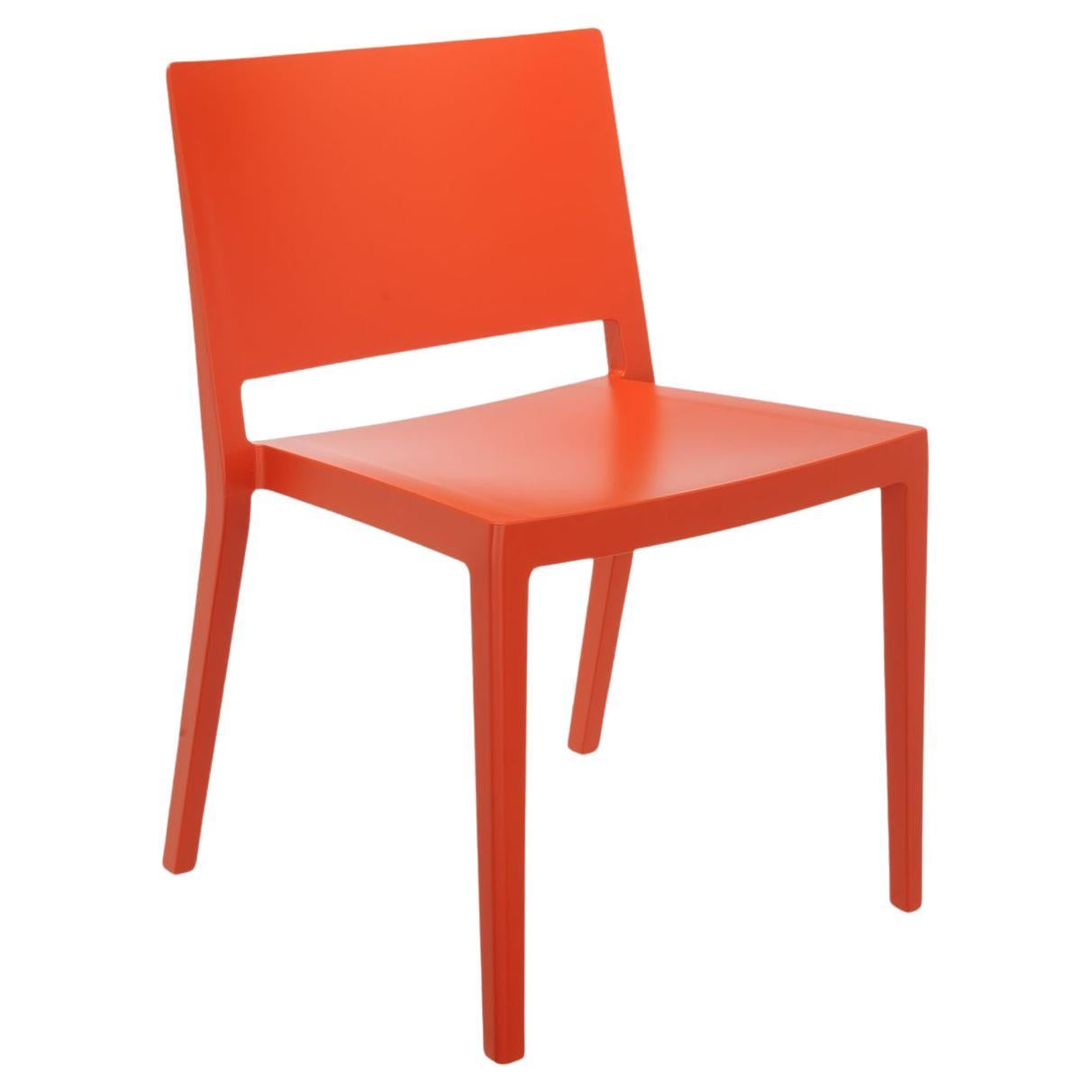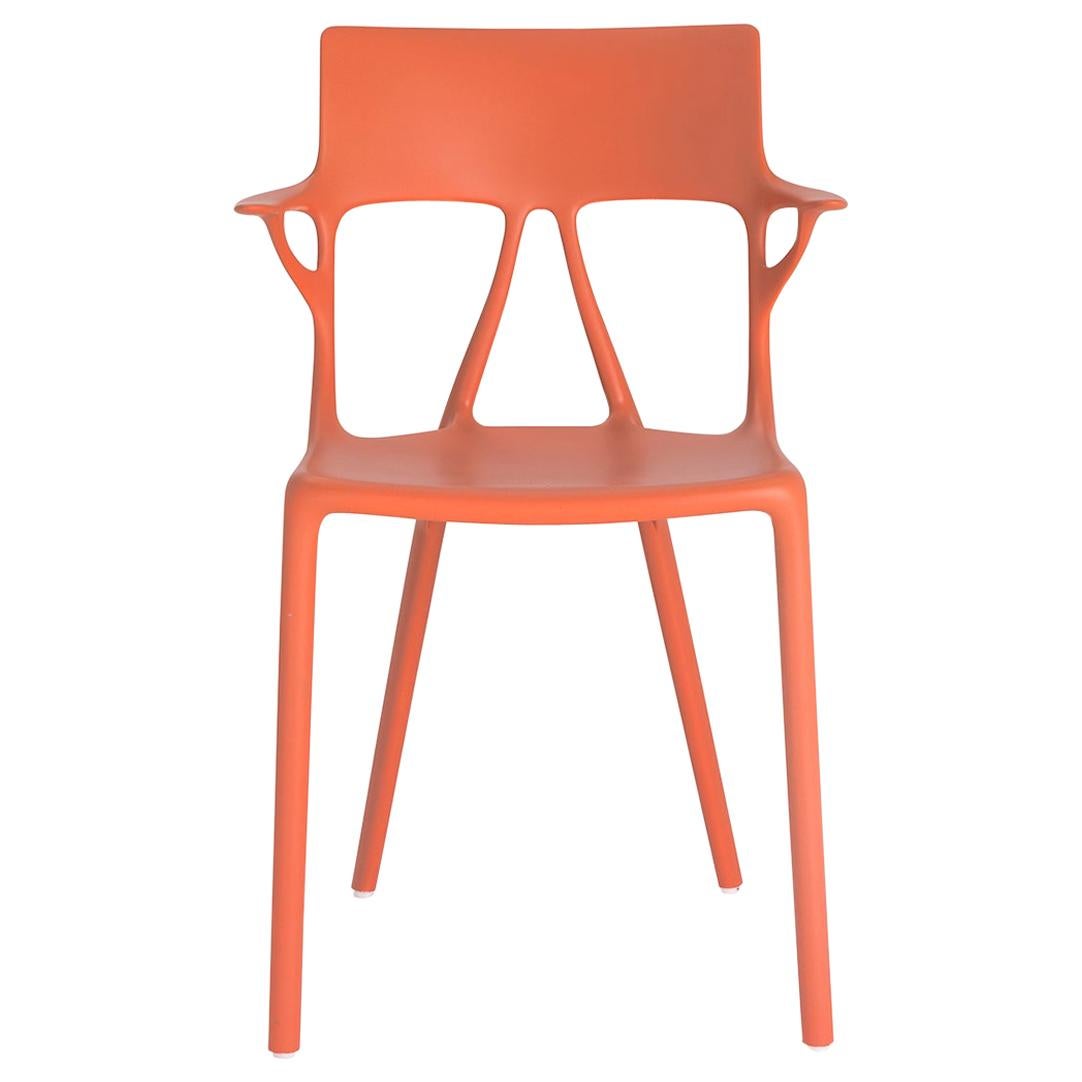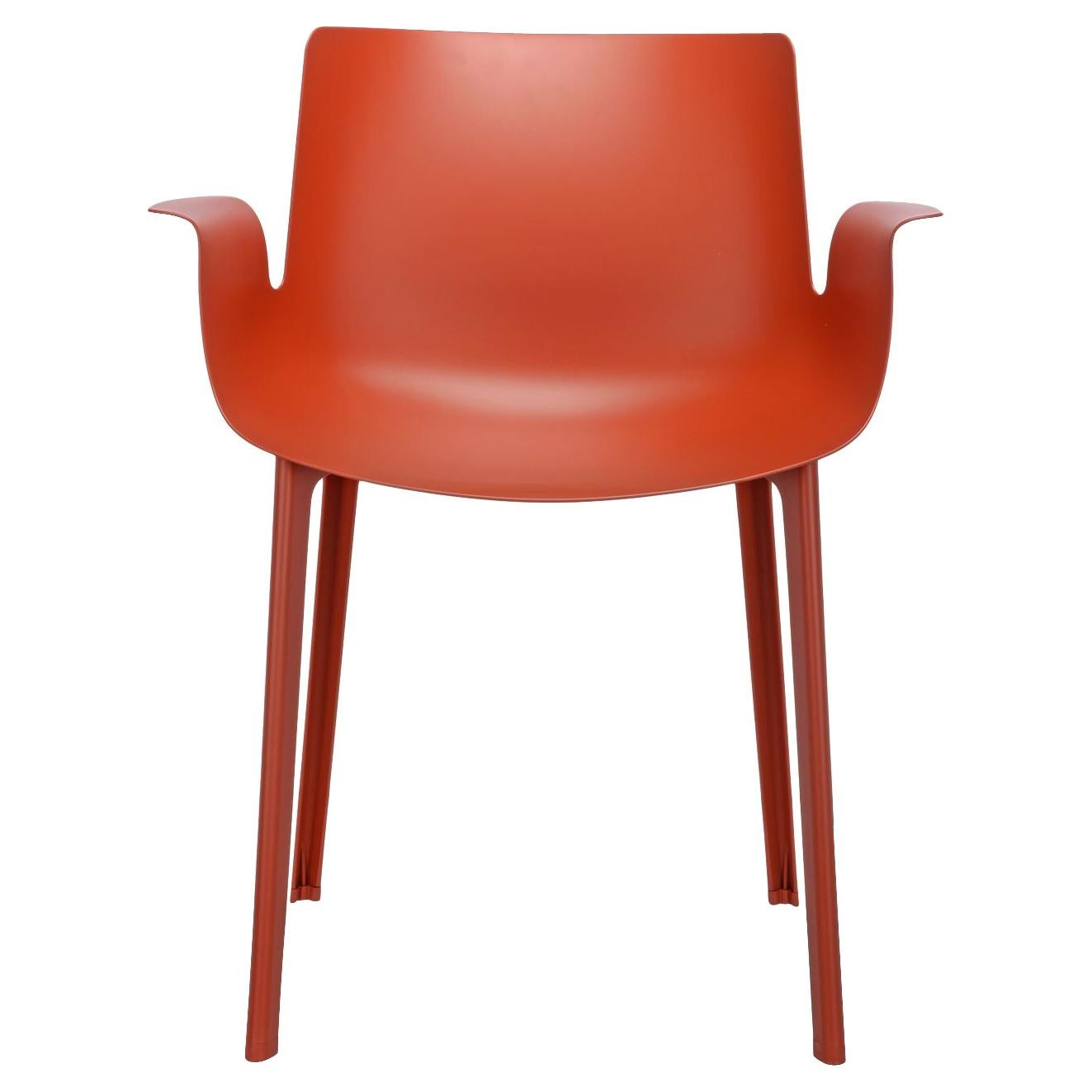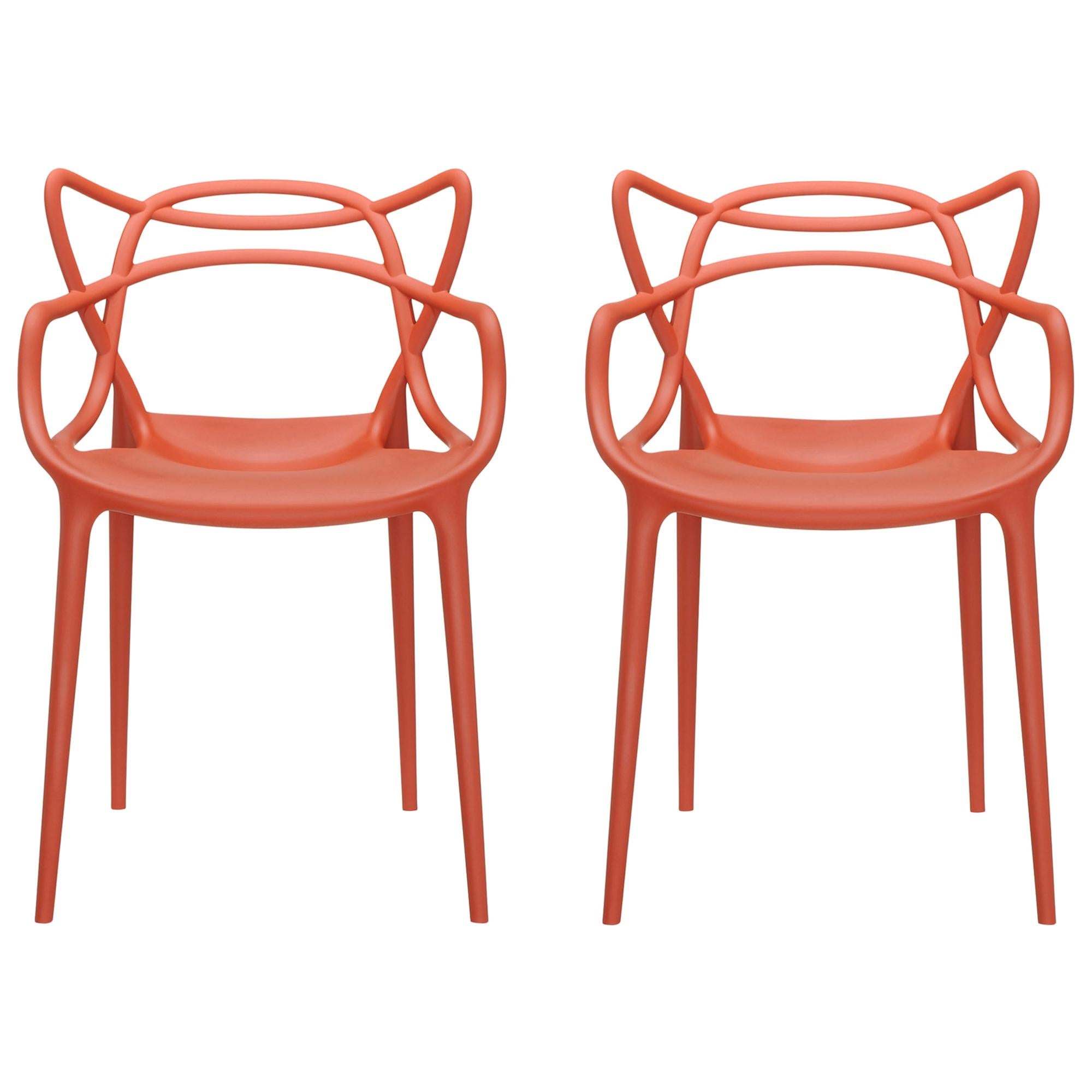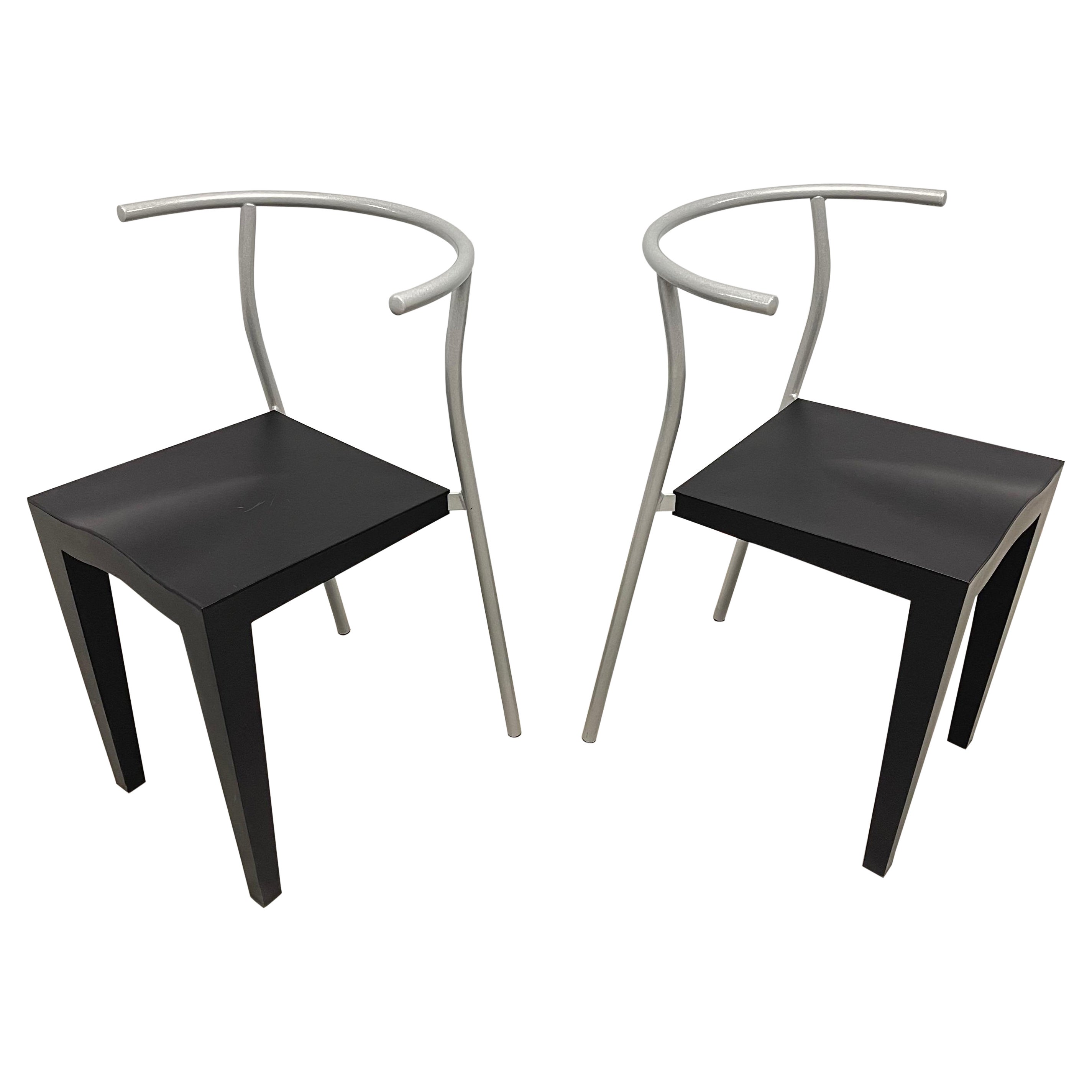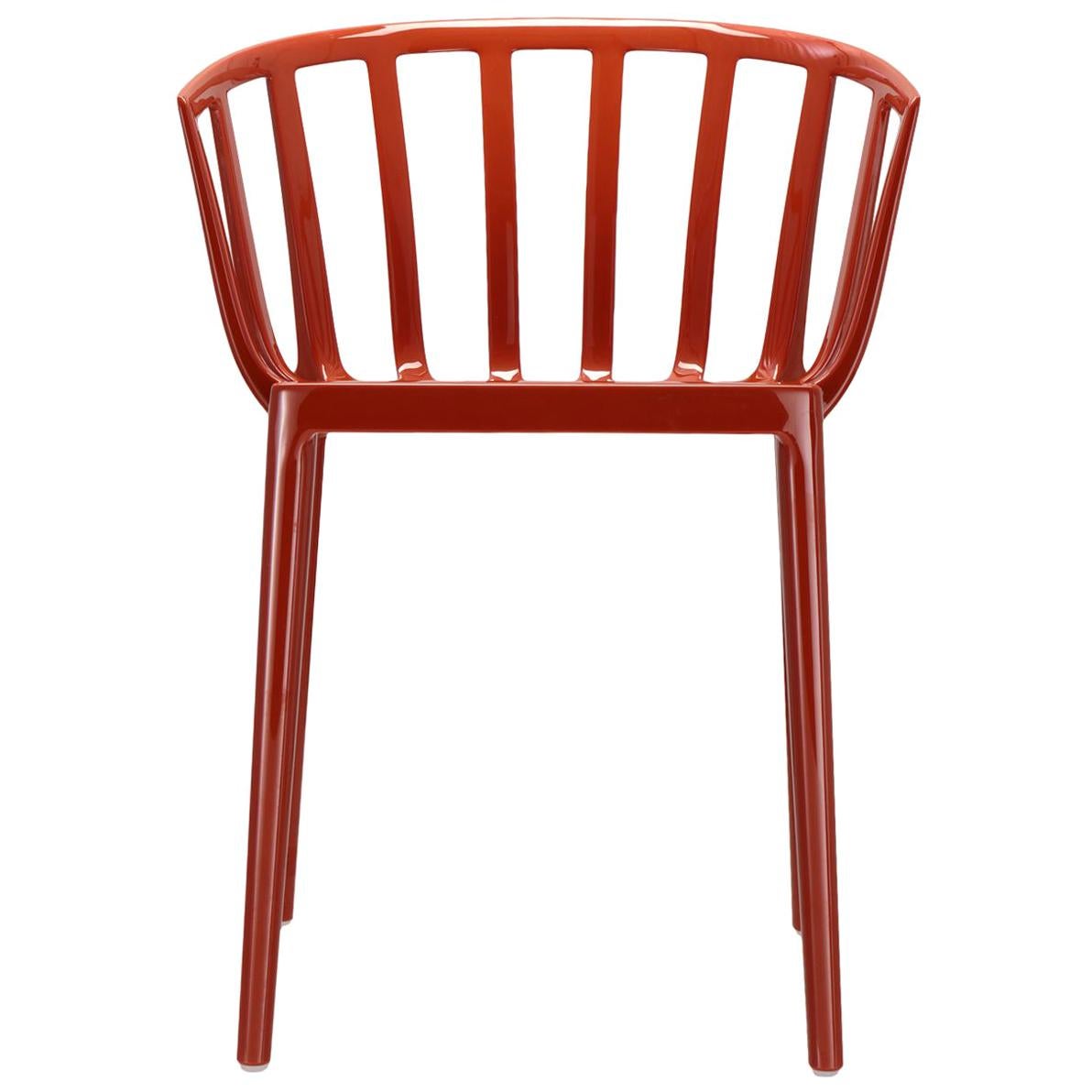Pair of Italian Orange Chairs by Kartell
About the Item
- Creator:Kartell (Designer)
- Dimensions:Height: 31 in (78.74 cm)Width: 19 in (48.26 cm)Depth: 17 in (43.18 cm)Seat Height: 17.5 in (44.45 cm)
- Sold As:Set of 2
- Materials and Techniques:
- Place of Origin:
- Period:
- Date of Manufacture:1960s
- Condition:Wear consistent with age and use.
- Seller Location:Los Angeles, CA
- Reference Number:
Kartell
The Italian design giant Kartell transformed plastic from the stuff of humble household goods into a staple of luxury design in the 1960s. Founded in Milan by Italian chemical engineer Giulio Castelli (1920–2006) and his wife Anna Ferrieri (1918–2006), Kartell began as an industrial design firm, producing useful items like ski racks for automobiles and laboratory equipment designed to replace breakable glass with sturdy plastic. Even as companies like Olivetti and Vespa were making Italian design popular in the 1950s, typewriters and scooters were relatively costly, and Castelli and Ferrieri wanted to provide Italian consumers with affordable, stylish goods.
They launched a housewares division of Kartell in 1953, making lighting fixtures and kitchen tools and accessories from colorful molded plastic. Consumers in the postwar era were initially skeptical of plastic goods, but their affordability and infinite range of styles and hues eventually won devotees. Tupperware parties in the United States made plastic storage containers ubiquitous in postwar homes, and Kartell’s ingenious designs for juicers, dustpans, and dish racks conquered Europe. Kartell designer Gino Colombini was responsible for many of these early products, and his design for the KS 1146 Bucket won the Compasso d’Oro prize in 1955.
Buoyed by its success in the home goods market, Kartell introduced its Habitat division in 1963. Designers Marco Zanuso and Richard Sapper created the K1340 (later called the K 4999) children’s chair that year, and families enjoyed their bright colors and light weight, which made them easy for kids to pick up and move. In 1965, Joe Colombo (1924–78) created one of Kartell’s few pieces of non-plastic furniture, the 4801 chair, which sits low to the ground and comprised of just three curved pieces of plywood. (In 2012, Kartell reissued the chair in plastic.) Colombo followed up on the success of the 4801 with the iconic 4867 Universal Chair in 1967, which, like Verner Panton’s S chair, is made from a single piece of plastic. The colorful, stackable injection-molded chair was an instant classic. That same year, Kartell introduced Colombo’s KD27 table lamp. Ferrierei’s cylindrical 4966 Componibili storage module debuted in 1969.
Kartell achieved international recognition for its innovative work in 1972, when a landmark exhibition curated by Emilio Ambasz called “Italy: The New Domestic Landscape” opened at New York’s Museum of Modern Art. That show introduced American audiences to the work of designers such as Gaetano Pesce; Ettore Sottsass, founder of the Memphis Group; and the firms Archizoom and Superstudio (both firms were among Italy's Radical design groups) — all of whom were using wit, humor and unorthodox materials to create a bracingly original interior aesthetic.
Castelli and Ferrieri sold Kartell to Claudio Luti, their son-in-law, in 1988, and since then, Luti has expanded the company’s roster of designers.
Kartell produced Ron Arad’s Bookworm wall shelf in 1994, and Philippe Starck’s La Marie chair in 1998. More recently, Kartell has collaborated with the Japanese collective Nendo, Spanish architect Patricia Urquiola and glass designer Tokujin Yoshioka, among many others. Kartell classics can be found in museums around the world, including MoMA, the Victoria and Albert Museum and the Cooper Hewitt, Smithsonian Design Museum. In 1999, Claudio Luti established the Museo Kartell to tell the company’s story, through key objects from its innovative and colorful history.
Find vintage Kartell tables, seating, table lamps and other furniture on 1stDibs.
- ShippingRetrieving quote...Ships From: Los Angeles, CA
- Return PolicyA return for this item may be initiated within 3 days of delivery.
- Classy Pair of Italian ChairsLocated in Los Angeles, CAClassy Pair of Italian Chairs on coasters with metal nailsCategory
Vintage 1960s Italian Chairs
MaterialsMetal
- Pair of Danish Chairs by Fritz Hanzen, 1960sBy Fritz HansenLocated in Los Angeles, CAPair of Danish chairs by Fritz Hanzen, 1960s.Category
Vintage 1960s Danish Chairs
MaterialsChrome
- Pair of Cane ChairsLocated in Los Angeles, CAPair of Cane chairs in the style of Pierre Jeanneret.Category
Mid-20th Century Chairs
MaterialsWood
- Pair of Teak ChairsLocated in Los Angeles, CATwo teak chairs in the style of Pierre Jeanneret.Category
Vintage 1950s Indian Chairs
MaterialsWood, Teak
- Set of Six Italian 'Louise' Chairs by Poltrona FrauBy Poltrona FrauLocated in Los Angeles, CAVintage set of six "Louise" cream/putty chairs feature a sturdy structure made from solid ash and beech wood. The seats are padded with high-quality polyurethane foam. The incorporat...Category
2010s Italian Chairs
MaterialsFoam, Wood
- Set of 4 Vintage Italian ChairsLocated in Los Angeles, CASet of 4 Vintage Italian Chairs painted wood and brushed silk blendCategory
Vintage 1970s Italian Chairs
MaterialsTextile
- Set of 2 Kartell Lizz Matt Orange Chair by Piero LissoniBy Piero Lissoni, KartellLocated in Brooklyn, NYA light, essential and rigorous chair. Its square line is designed by Piero Lissoni, with a wide seat and a wide, low backrest. Created for use around tables, it was born in a range ...Category
21st Century and Contemporary Italian Modern Chairs
MaterialsPlastic
- Set of 2 Kartell AI Chair in Orange Created by Artificial IntelligenceBy Philippe Starck, KartellLocated in Brooklyn, NYKartell continues its ongoing commitment to sustainability with eco-friendly products which are part of the broader project expressed by the industrial manifesto Kartell loves the pl...Category
21st Century and Contemporary Italian Chairs
MaterialsPlastic
- Kartell Piuma Chair in Rusty Orange by Piero LissoniBy Kartell, Piero LissoniLocated in Brooklyn, NY2016 saw the completion of the “Piuma” project by Piero Lissoni. The chair is one of the most revolutionary and enterprising products in Kartell’s repertoire of technology and materi...Category
21st Century and Contemporary Italian Modern Chairs
MaterialsPlastic
- Set of 2 Kartell Masters Chairs in Orange by Philippe Starck & Eugeni QuitlletBy Philippe Starck, KartellLocated in Brooklyn, NYThe Masters chair is a powerful tribute to three symbolic chairs, re-read and re-interpreted by the creative genius of Starck. The unmistakable silhouett...Category
21st Century and Contemporary Italian Modern Dining Room Chairs
MaterialsPlastic
- Pair of Postmodern "Dr Glob" Chairs by Philippe Starck for Kartell, Italy, 1990By Philippe Starck, KartellLocated in Miami, FLPair of iconic Dr Glob chairs. Post modern design rendered in black molded propylene with a grey powder coated steel frame back and legs. Designed by Philippe Starck for Kartell, 1990.Category
Late 20th Century Italian Post-Modern Dining Room Chairs
MaterialsSteel
- Set of 2 Kartell Venice Chairs in Glossy Rusty Orange by Philippe StarckBy Philippe Starck, KartellLocated in Brooklyn, NYA tribute to the city of Venice in a chair for both the table and the living room, which combines classic lines with comfort. Venice is suitable for both indoor and outdoor use.Category
21st Century and Contemporary Italian Modern Armchairs
MaterialsPlastic
